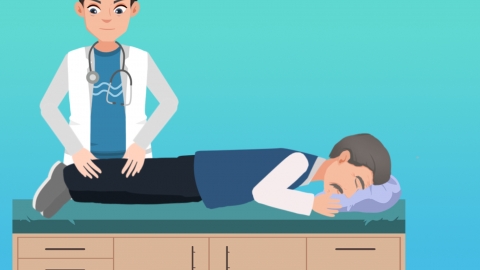How to remove eye bags in the elderly
Generally, the appearance of eye bags in older adults may be caused by natural aging and loosening of the skin, prolapse of orbital fat, chronic eyelid conjunctivitis, chronic glomerulonephritis, or chronic heart failure. It is recommended to seek timely medical evaluation to determine the underlying cause, followed by appropriate interventions under a doctor's guidance, such as general care, medication, or surgical treatment. Specific causes are analyzed as follows:

1. Natural aging and skin laxity: With advancing age, older adults experience loss of collagen and reduced elasticity in the skin around the eyes, leading to gradual sagging and the formation of eye bags. Daily use of eye care products containing vitamin E or retinol, gentle massage around the eye area to promote blood circulation, and sun protection when outdoors can help reduce UV damage and slow down skin aging.
2. Prolapse of orbital fat: In older adults, relaxation of the orbital septum allows orbital fat to protrude forward, forming eye bags. This condition can be improved through surgery, such as transconjunctival blepharoplasty. This procedure involves an incision inside the eyelid to remove excess orbital fat, offering rapid recovery and no visible scarring.
3. Chronic eyelid conjunctivitis: Chronic inflammation of the conjunctiva due to long-term bacterial irritation leads to recurrent swelling and redness, worsening eye bags. Symptoms often include increased eye discharge and redness of the eyelids. Patients should follow medical advice to use antibacterial medications such as tobramycin eye drops, levofloxacin eye drops, or erythromycin eye ointment to control infection, reduce inflammation, and alleviate eye swelling.
4. Chronic glomerulonephritis: Impaired kidney filtration function results in fluid retention and accumulation of metabolic waste, causing edema—especially in the thin skin around the eyes—leading to the development or worsening of eye bags. Other symptoms may include leg edema and abnormal protein in urine. Patients should take diuretics such as hydrochlorothiazide tablets, spironolactone tablets, or furosemide tablets as prescribed to eliminate excess fluid and reduce swelling, while also receiving treatment for the underlying kidney disease.
5. Chronic heart failure: Reduced cardiac pumping function leads to impaired venous return and systemic congestion, resulting in periorbital tissue edema and eye bag formation. Common accompanying symptoms include chest tightness, shortness of breath, and fatigue after physical activity. Patients should take medications such as digoxin tablets, metoprolol tartrate tablets, and captopril tablets as directed by their physician to strengthen heart function, improve circulation, reduce congestion, and alleviate eye swelling and other symptoms.
In daily life, it is important to ensure adequate sleep, avoid staying up late, limit fluid intake before bedtime, and prevent worsening of periorbital edema. A low-sodium diet is recommended, along with increased consumption of protein- and vitamin-rich foods to provide essential nutrients for healthy skin.




